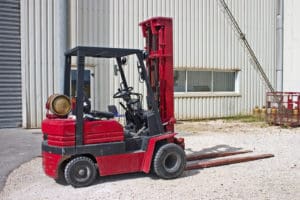
Is your forklift fleet going to be working with propane? Excellent! However, the substance is one that is extremely volatile and can be extraordinarily dangerous if not handled properly. Have no fear, there are steps you can take to enhance safety and assure all using this material do so in an appropriate manner. OSHA, or the Occupational Safety and Health Administration, has composed specific requirements to help you throughout this process. Adhering to these directives will not only bolster safety but they will also reduce liabilities. Here is a how-to guide on using propane in your forklift fleet according to OSHA:
1. Install Properly
Installing a propane tank is an easy errand to complete, but it must be done judiciously and carefully. According to OSHA regs 1910.110(e)(4)(iii), due care must be taken especially when dealing with the likes of liquid petroleum, or LP as it is called. When changing a propane tank, it is essential to alert all in the area of your inclination to do so. Furthermore, taking the appropriate and responsible actions will optimize and expedite this process. Installing a propane tank is a simple task to complete and a routine one at that. However, failing to use foresight and prudence whilst doing so can be extraordinarily disastrous. The effects range from subtle leaks to the prospect of an explosive situation or BLEVE as it is called in the industry.
2. Use Personal Protective Equipment
This is imperative but often overlooked. The fuel inside any propane or LP tank is contained at a high pressure and has a temperature of -44 Fahrenheit. This material is more than just ice cold, it can be corrosive and destructive to anything it comes across. According to Toyota, contact with the fuel can damage your eyes and skin and cause frostbite. This scenario can be easily avoided through the use of protective gloves and goggles over the eyes and exposed skin. Additionally, this material is highly flammable and thus it would be ill-advised to venture near any open flames if this substance lingers on your hands.
3. Detect Leaks
There is a simple idiom that is championed in the event a leak does occur. First, do not panic. Second, use the idiom: look, listen, and smell. When a leak occurs, it is sometimes visible to the naked eye be that the contests are under high pressure escaping a canister a rapid rate. If this is not the case, then listen. The same ingredients produce a hissing sound that gets louder as you get closer to the leak. If neither of these two apply, then smell. All liquid gas and propane feature odorants to help users detect leaks more easily. Chances are if your container is leaking you will certainly smell it. The closer you get to the leak, the more the odor will emanate. Upon discovery, shut off the valve and ventilate the area to diminish the pyrotechnic and catalytic possibilities of this substance.
This article was written by Tom Reddon. Tom is a forklift specialist and blog manager for the National Forklift Exchange. He also sits on the Material Handling Equipment Distributors Association (MHEDA) Executive Dialogue team. Follow him on Twitter at @TomReddon.


